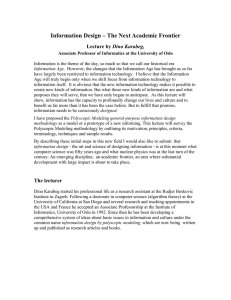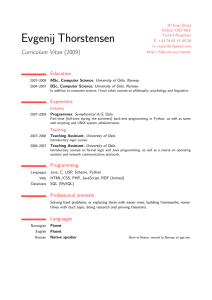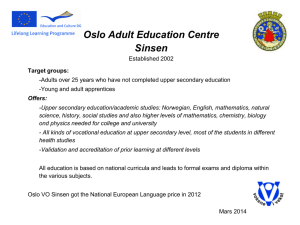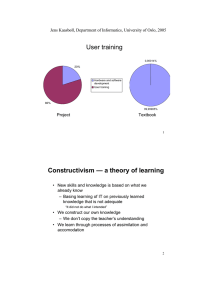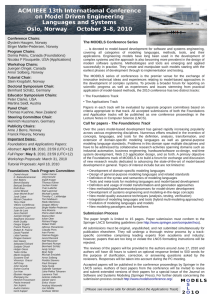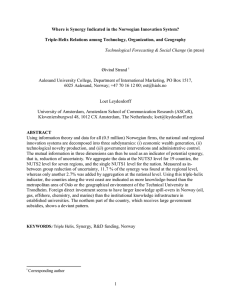13 European Conference on Public Health PROMOTING THE PUBLIC’S HEALTH
advertisement
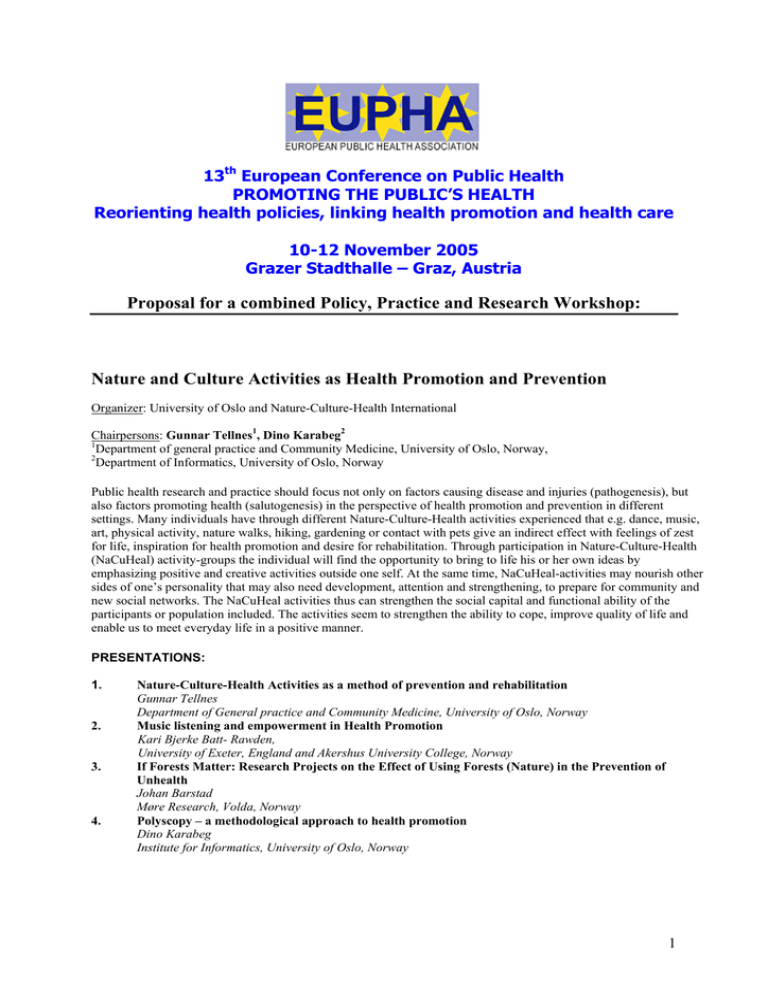
13th European Conference on Public Health PROMOTING THE PUBLIC’S HEALTH Reorienting health policies, linking health promotion and health care 10-12 November 2005 Grazer Stadthalle – Graz, Austria Proposal for a combined Policy, Practice and Research Workshop: Nature and Culture Activities as Health Promotion and Prevention Organizer: University of Oslo and Nature-Culture-Health International Chairpersons: Gunnar Tellnes1, Dino Karabeg2 1 Department of general practice and Community Medicine, University of Oslo, Norway, 2 Department of Informatics, University of Oslo, Norway Public health research and practice should focus not only on factors causing disease and injuries (pathogenesis), but also factors promoting health (salutogenesis) in the perspective of health promotion and prevention in different settings. Many individuals have through different Nature-Culture-Health activities experienced that e.g. dance, music, art, physical activity, nature walks, hiking, gardening or contact with pets give an indirect effect with feelings of zest for life, inspiration for health promotion and desire for rehabilitation. Through participation in Nature-Culture-Health (NaCuHeal) activity-groups the individual will find the opportunity to bring to life his or her own ideas by emphasizing positive and creative activities outside one self. At the same time, NaCuHeal-activities may nourish other sides of one’s personality that may also need development, attention and strengthening, to prepare for community and new social networks. The NaCuHeal activities thus can strengthen the social capital and functional ability of the participants or population included. The activities seem to strengthen the ability to cope, improve quality of life and enable us to meet everyday life in a positive manner. PRESENTATIONS: 1. 2. 3. 4. Nature-Culture-Health Activities as a method of prevention and rehabilitation Gunnar Tellnes Department of General practice and Community Medicine, University of Oslo, Norway Music listening and empowerment in Health Promotion Kari Bjerke Batt- Rawden, University of Exeter, England and Akershus University College, Norway If Forests Matter: Research Projects on the Effect of Using Forests (Nature) in the Prevention of Unhealth Johan Barstad Møre Research, Volda, Norway Polyscopy – a methodological approach to health promotion Dino Karabeg Institute for Informatics, University of Oslo, Norway 1 ABSTRACT 4. Polyscopy – a methodological approach to health promotion Dino Karabeg Institute for Informatics, University of Oslo, Norway Issue: Health promotion can benefit from innovative use of information and information technology. A method called polyscopy that has been developed by the author distinguishes the so-called ‘high-level information’ which, like the view from the top of a mountain, provides simple, holistic insights. Polyscopy provides techniques for creating ‘scientific’ or provable high-level information. The focus of this article is the application of this approach to health promotion in general, and to nature-culture-health promotion in particular. Description: Four high-level results are presented as examples of fundamental insights about the nature-culturehealth interplay which can be communicated and proven by using polyscopy. All four results support a radical value change. A strategy based on online community building for nature-culture-health promotion is outlined. Lessons: While the experience with large-scale application of proposed ideas is still lacking, the workshop participants will be able to experience the naturalness and the power of the methods presented, and their potential value in health promotion. Conclusions: While the scientific techniques allow us to create results which are verifiable and therefore have high credibility, the results obtained are often too technical and detailed to be of value in health promotion. The methodological approach to health promotion represented by polyscopy allows us to overcome this difficulty and create verifiable general-purpose information. A radical value change may be expected to result from this approach. 2
